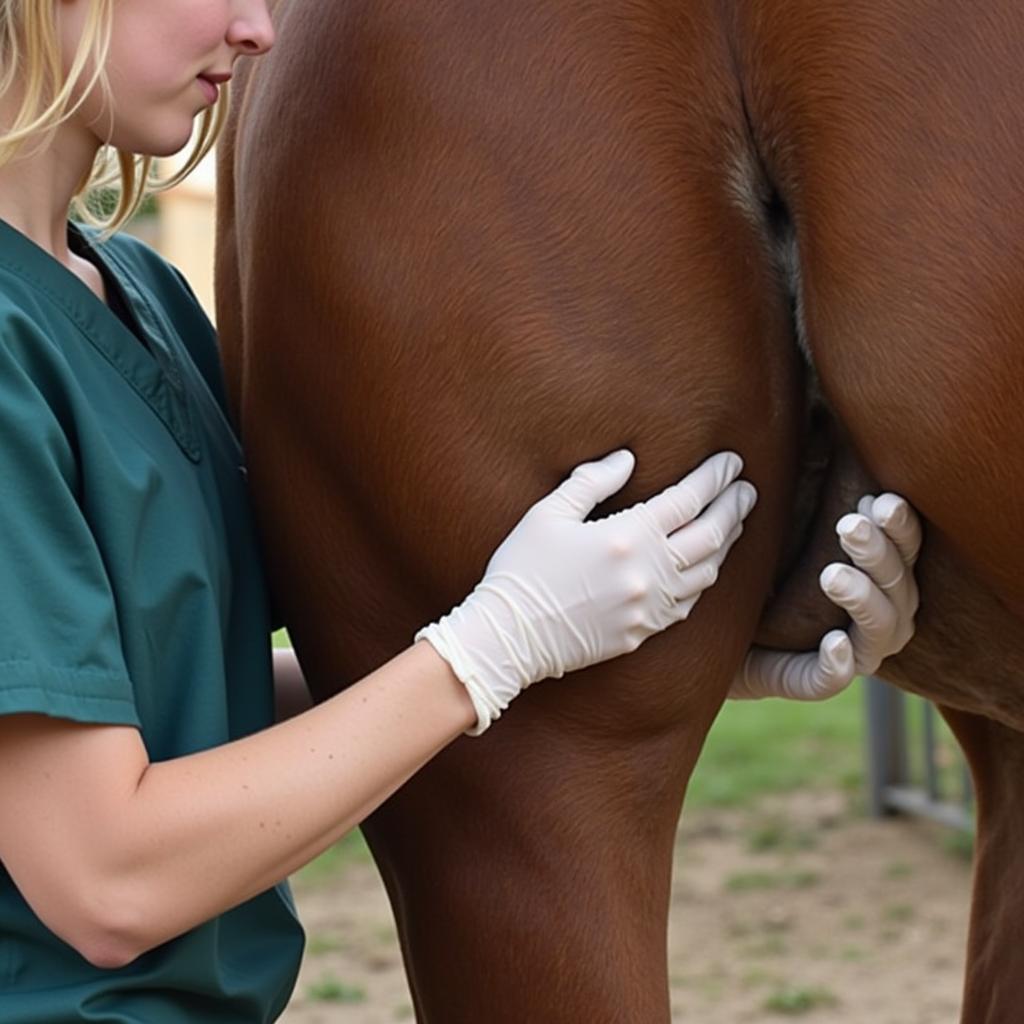The term “Horse Boobies” is a common misconception. Horses, like all other mammals except monotremes, do not have breasts or “boobies.” This often leads to confusion, especially among those unfamiliar with equine anatomy. Let’s delve into the biological reality of horse reproduction and clear up this common misunderstanding.
The Reality of Horse Reproduction: Mares and Their Mammary Glands
Horses reproduce sexually, with the female horse, known as a mare, giving birth to live young. The mare possesses mammary glands, located in the groin area between the hind legs, which produce milk to nourish their foals. These mammary glands, often mistakenly referred to as “horse boobies,” are essential for the foal’s survival and development. The mare’s udder consists of two halves, each containing a teat. Foals instinctively seek out these teats shortly after birth to receive the colostrum, a milk-rich in antibodies, which provides crucial immunity in the early days of life.
Why the Confusion? The Power of Misnomers
The term “horse boobies” likely arises from a lack of understanding of equine anatomy and a casual, perhaps humorous, application of human terms to animals. While it’s a common misconception, it’s crucial to use correct terminology when discussing animal anatomy to avoid confusion and promote accurate knowledge. Understanding the proper terms helps us appreciate the unique biological adaptations of different species.
The Importance of Correct Terminology
Using precise language when discussing animal anatomy is vital for clear communication, especially in veterinary and scientific contexts. Imagine the confusion if a veterinarian misidentified a crucial anatomical feature! Accurate language ensures everyone is on the same page, facilitating effective diagnosis and treatment.
Debunking the Myth: Educating Ourselves and Others
It’s important to dispel the myth of “horse boobies” and educate others on the correct anatomical terms. Sharing accurate information helps prevent the perpetuation of misinformation and encourages a deeper understanding of equine biology.
Teaching Children About Animal Anatomy
When teaching children about animals, it’s crucial to use appropriate language from the beginning. This fosters respect for animals and builds a solid foundation for future learning.
Dr. Emily Carter, DVM, a renowned equine veterinarian, emphasizes the importance of accurate terminology: “Using the correct anatomical terms, like ‘mammary glands’ or ‘udder,’ when discussing horses helps prevent misunderstandings and promotes a deeper understanding of their unique biology. This is particularly important when educating children about animal anatomy.”
 Veterinarian Examining a Mare
Veterinarian Examining a Mare
Conclusion: Beyond “Horse Boobies” – Appreciating Equine Anatomy
While the term “horse boobies” might be used casually, understanding the correct terminology and the biological reality of horse reproduction is crucial. Let’s move beyond the myth and appreciate the remarkable adaptations that allow mares to nourish their young. By using accurate language and educating ourselves and others, we contribute to a greater appreciation of these magnificent animals.
FAQ
- Do male horses have mammary glands? No, only female horses (mares) have mammary glands.
- How many teats does a mare have? A mare typically has two teats, one on each half of the udder.
- What is colostrum? Colostrum is the first milk produced by the mare after giving birth, rich in antibodies that provide essential immunity to the foal.
- Why is it important to use correct anatomical terms? Using correct terms ensures clear communication and promotes accurate understanding of animal biology.
- Where are the mammary glands located on a mare? The mammary glands are located in the groin area between the hind legs, forming the udder.
- How often does a foal nurse? A foal will nurse frequently throughout the day, initially every few hours.
- When does a mare stop producing milk? A mare will naturally stop producing milk as the foal begins to wean, usually around six months of age.
For further information on horse care and other pet-related topics, explore other articles on our website. When you need assistance, please contact us: Phone: 0772127271, Email: [email protected] Or visit us at: QGM2+WX2, Vị Trung, Vị Thuỷ, Hậu Giang, Việt Nam. We have a 24/7 customer service team.